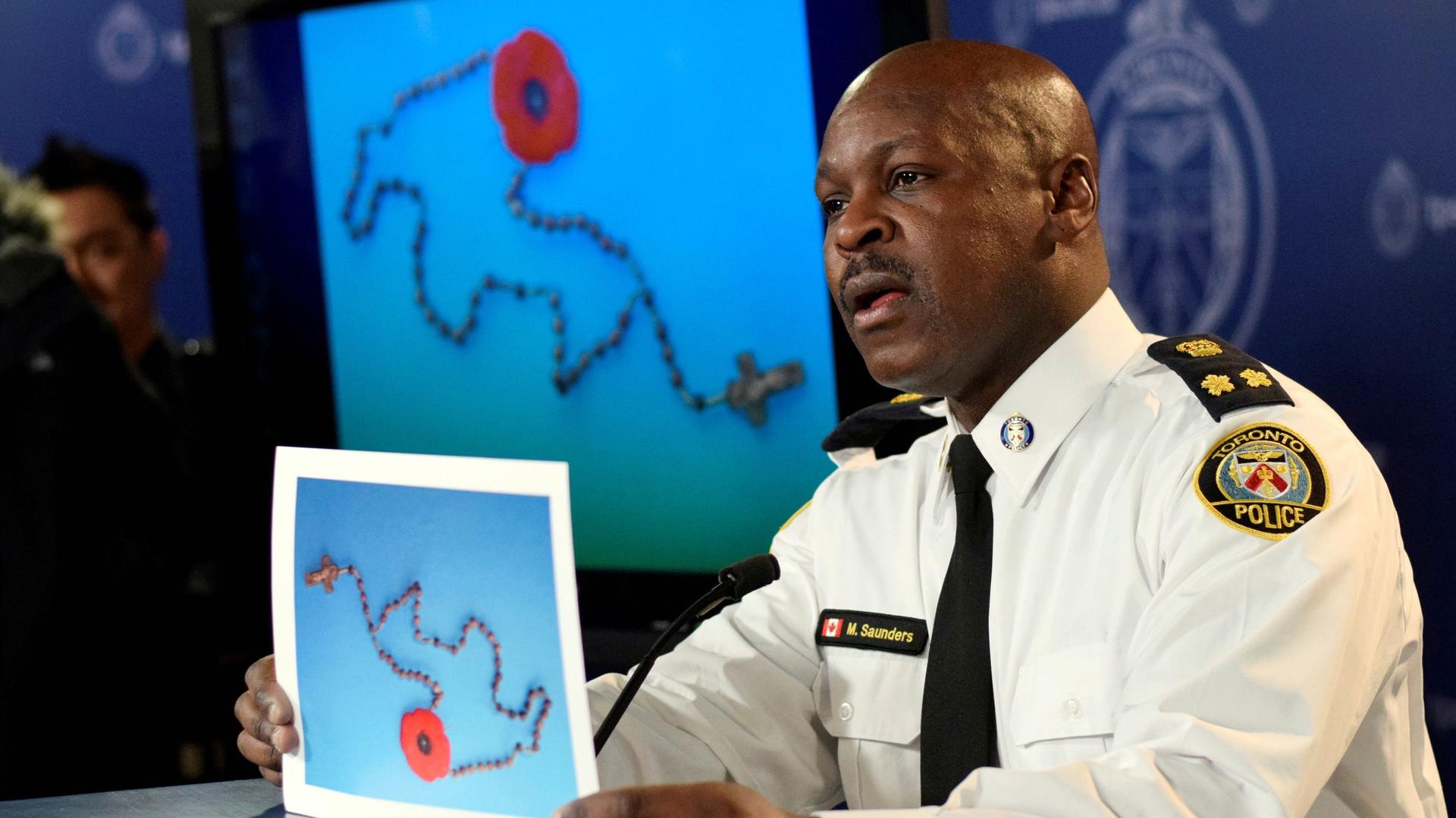Mark Saunders, then the deputy police chief, speaks at a news conference in Toronto, Canada, Feb. 24, 2015.
With just eight months to go in his term as chief of the Toronto Police Service, Mark Saunders seems to have surprised everyone by abruptly resigning — without fully explaining why. He’s had some health issues, including a kidney transplant, but he said that’s not why he’s leaving.
“Family is the most important thing to me right now. And sorry if anyone’s shocked in a bad way. … But there are a whole host of reasons. And at the end of the day, it’s a whole bunch of things, but it’s going to be good to be a dad.”
“Family is the most important thing to me right now. And sorry if anyone’s shocked in a bad way,” Saunders said late Monday. “But there are a whole host of reasons. And at the end of the day, it’s a whole bunch of things, but it’s going to be good to be a dad.”
Related: Gary Younge on Europe and the US: There is no ‘better’ form of racism
Reporters kept asking, why now? But Saunders refused to explain more.
“Mark Saunders himself probably feels like, that he doesn’t necessarily want to engage in another round of conversation and potential reform, and that it may be better left to someone else who would have more time left at the service,” said Akwasi Owusu-Bempah, who studies policing as an assistant professor at the University of Toronto.
Saunders was born in England to Jamaican parents who moved the family to Canada when he was a child. He was appointed chief by the Toronto Police Services Board in 2015.
Owusu-Bempah said Saunders’ main competitor for the position back then was also black, and that candidate was seen as more progressive, with more ties to black communities. In contrast, Owusu-Bempah said Saunders was seen as more of a “cop’s cop,” since he had overseen the homicide and guns and gangs task force units.
Related: From Minneapolis to Madrid, racial profiling and police harassment costs lives
“The board went with Saunders, which signaled to many people in the community that they were going with an enforcement-oriented officer as opposed to a progressive, community-oriented officer,” Owusu-Bempah said.
That choice was reflected in what people in highly policed neighborhoods experienced, said Sam Tecle, a community worker in Toronto’s Jane and Finch neighborhood.
“I have young people that I work with who tell me they have to think about which way they go to school or to walk with a girl or a young lady so that they know that they’re less likely to hit a checkpoint, which means to encounter police.”
“I have young people that I work with who tell me they have to think about which way they go to school or to walk with a girl or a young lady so that they know that they’re less likely to hit a checkpoint, which means to encounter police,” he said.
Related: In France, the killing of George Floyd invokes the memory of Adama Traoré
There have been several high-profile incidents of black Canadians being racially profiled and assaulted by police. In 2018, the Ontario Human Rights Commission found that while black people were just 9% of Toronto’s population, they made up 70% of those who died in police shootings. Tecle said Saunders helped maintain the status quo.
“He provides a certain kind of cover for those who believe that representation represents change,” Tecle said. “It becomes much more difficult to get certain calls to be made on the behalf of black and racialized Indigenous folks because so often, the retort is that ‘there’s a black police chief.’”
But after George Floyd’s death, Saunders declared that incremental change was no longer enough. He knelt with protesters in the street. And by stepping away from his position, Tecle said Saunders has left an opening — for possible change.
Related: America’s BLM protests find solidarity in South Korea
“It is a moment of possibility,” he said. “This is the beginning, I think, toward thinking that policing may not be an institution to which we should continue to invest — if black lives really do matter, as so many of our corporations and our colleagues at work and our bus drivers and our city councilors have proclaimed on social media.”
The protesters have already won some change. Earlier this week, Toronto’s mayor committed to putting body cameras on all officers — maybe even by this summer. And some city councilors have taken up protesters’ calls to “defund the police.”
Our coverage reaches millions each week, but only a small fraction of listeners contribute to sustain our program. We still need 224 more people to donate $100 or $10/monthly to unlock our $67,000 match. Will you help us get there today?
